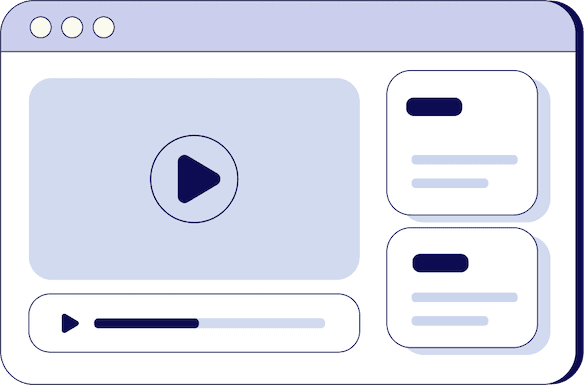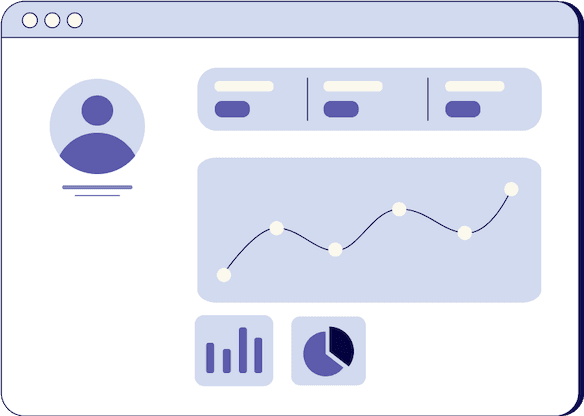
Preparing for List Building
Mark Colgan
B2B Sales Consultant, Lead Sourcing Detective

- duration
- 15 min
- Average Score
- 86%
- Stars
- 5
Why List Building is the Foundation of a Successful Outbound Strategy
Before you start pulling contacts from a database, you need a plan. According to sales expert Mark Colgan, many sales teams make the mistake of rushing into prospecting without defining their Ideal Client Profile (ICP), buyer Personas, or segmentation strategy.
This leads to:
- Wasted effort on unqualified leads
- Low response rates due to irrelevant messaging
- Poor domain reputation from sending bulk emails to the wrong contacts
A well-researched, targeted list is the foundation of a successful outbound sales strategy. Without it, your outreach will be too broad, and your chances of booking meetings will decrease.
Why a Strong Prospect List Matters
A well-built list helps you:
- Save time by focusing on the right prospects
- Improve targeting for higher engagement
- Increase response rates with relevant messaging
- Protect your email domain reputation by reducing bounces and spam complaints
A targeted, segmented list improves conversion rates because prospects receive emails that speak to their specific challenges.
Common Mistakes in List Building
Many outbound sales teams struggle because they skip the preparation phase. Here are three major mistakes to avoid:
Mistake #1: Building a Broad, Unfiltered List
Sales teams often assume that more contacts = more opportunities. In reality, a broad list means:
- Low engagement because messaging isn’t relevant
- Higher spam complaints from uninterested recipients
- Wasted effort reaching out to the wrong audience
Mistake #2: Ignoring Segmentation
Not all companies face the same challenges. A company with 200 employees and one with 10,000 employees need different solutions.
Without segmentation, your messaging is too generic to resonate with your audience, leading to fewer responses.
Mistake #3: Not Validating the ICP in the Real World
Some businesses define their ICP based on internal assumptions, but never check if companies that fit their criteria actually exist.
A well-defined ICP should be actionable—meaning you can find real companies that match it.
Step 1: Define Your Ideal Client Profile (ICP)
Your ICP describes the companies that are the best fit for your product or service. Instead of targeting random businesses, a strong ICP includes specific criteria such as:
Key ICP Criteria:
- Industry – Who benefits most from your solution?
- Company Size – Employee count, revenue, and growth stage
- Location – Are there specific regions you focus on?
- Tech Stack – Do they use software that integrates with your product?
- Challenges & Pain Points – What problems are they trying to solve?
Examples of ICPs
- Weak ICP: "We target B2B companies."
- Strong ICP: "We target e-commerce marketing agencies with 11-50 employees that offer email and SMS marketing services in North America or the UK."
A specific ICP helps you build a relevant and high-quality list, leading to better outbound results.
Step 2: Identify Your Buyer Personas
While ICPs focus on companies, buyer Personas focus on individuals within those companies.
Key Buyer Persona Criteria:
- Job Titles – Who makes the buying decision?
- Pain Points & Challenges – What problems do they face?
- KPIs & Responsibilities – What are their main business goals?
- Common Objections – Why might they hesitate to buy?
Example of Buyer Personas
For an e-commerce marketing agency:
- A CEO at a small agency may make all buying decisions
- A Head of Sales at a larger agency may be your primary contact
Each role requires different messaging tailored to their specific concerns.
Step 3: Segment Your Prospect List
A segmented list ensures your outreach is relevant and personalized.
Ways to Segment Your List:
1. By Company Size- Small businesses (1-50 employees) – May need cost-effective solutions
- Mid-size companies (51-500 employees) – Likely have a growing sales team
- Enterprises (500+ employees) – May need integrations with existing software
Different industries have unique challenges, so segmenting by industry allows for more targeted messaging.
3. By Decision-Maker Level- CEOs & Founders – Focus on long-term growth
- Heads of Sales – Concerned with team performance
- Sales Managers – Need tactical improvements for daily workflows
Example of Poor Segmentation
One company defined its ICP as "businesses with 1,000-10,000 employees."
This range was too broad, making their messaging ineffective.
A better approach:
Segment into 1,000-3,000 employees, 3,000-6,000 employees, and 6,000-10,000 employees for more precise targeting.
Step 4: Use Data to Personalize Messaging
Your outreach should be backed by real data to make emails relevant.
Ways to Personalize Your Messaging:
Hiring TrendsExample: "I noticed your team is growing—how are you handling sales pipeline challenges?"
Tech StackExample: "I see you’re using HubSpot—many of our customers find our integration improves efficiency."
Recent Funding RoundsExample: "Congrats on your Series A funding! Many growing teams struggle with outbound prospecting—happy to share insights."
Where to Find This Data
- LinkedIn for hiring trends
- Crunchbase for funding data
- BuiltWith for tech stack information
The more data-driven your messaging, the higher your chances of booking meetings.
Step 5: Build a Campaign Plan Before Launching Outreach
A structured campaign plan ensures that every outbound effort is intentional and strategic.
What to Include in Your Campaign Plan:
- ICP & Segment – Who are you targeting?
- Buyer Persona & Messaging Angle – What message will resonate?
- Pain Points & Objections – What challenges do they face?
- Triggers & Buying Signals – Are there any hiring, funding, or tech adoption signals?
By planning your campaign in advance, you increase the effectiveness of your outreach.
Key Takeaways for Successful List Building
- Start with a clear ICP and buyer Personas before pulling data from a database.
- Segment your list to ensure highly targeted and relevant outreach.
- Use real-world data points to personalize your messaging.
- Plan your campaign before launching outreach to maximize effectiveness.
A strategic, well-researched list will improve engagement, response rates, and revenue generation.
How Triple Session works
Training, Testing, & Feedback
Triple Session's proven formula accelerates your sales performance through consistent, organized practice, backed by measurable results.

Bite-Sized Knowledge
Our expert-led video sessions simplify complex sales concepts into easy-to-digest 5-15 minute videos for better retention.

Test Your Understanding
After each session, there will be a quiz to test your understanding and help you improve on any areas that need more attention.

Evaluate and Grow
Get progress snapshots after each quiz to track your improvements and achieve your sales mastery goals.